Imitation
The imitation technique is often used in design: in one way or another they create the impression that there is a window in the room. Psychologists believe that even a painted window has a positive effect on a person’s mood, and this technique should not be neglected.
- Curtains
The presence of curtains immediately shows the location of the window. If you hang a curtain over part of the wall, it will seem that it hides a window behind it. A fan will help create the feeling of a light breeze blowing through the window. A lamp located behind the curtain will enhance the feeling. If you lay out a frame of moldings on the wall, it will create the complete impression that there is a real window in the room.
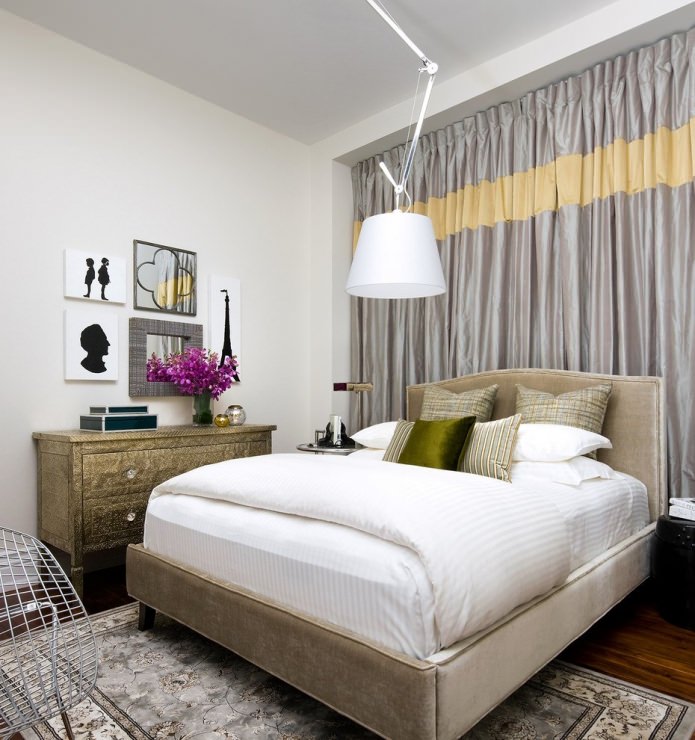
- Paintings
A beautiful large landscape in a solid frame can also serve as a kind of “window into nature”. Landscape photo wallpapers have the same effect.
Tip: To enhance the effect, choose paintings with perspective, for example, views of paths, bridges, alleys or sea horizons. Such images create a sense of depth of space and visually expand the room.
Another option is to use backlit paintings. Small built-in lights can imitate daylight, enhancing the illusion of a real window.
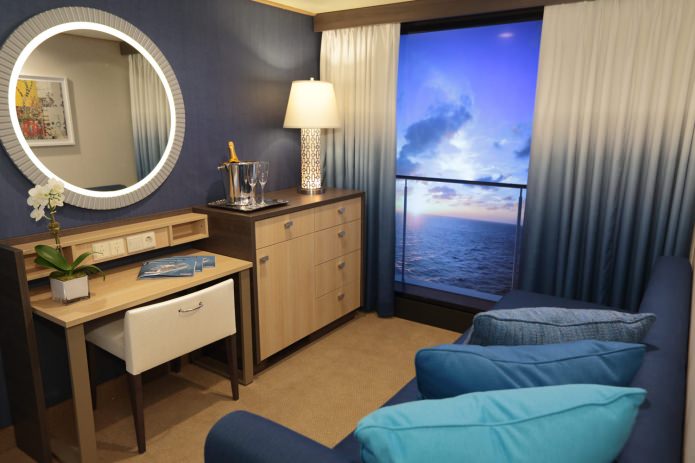
- Panels
A plastic panel covering the box in which the lighting is mounted can act as a false window if you choose the appropriate design.
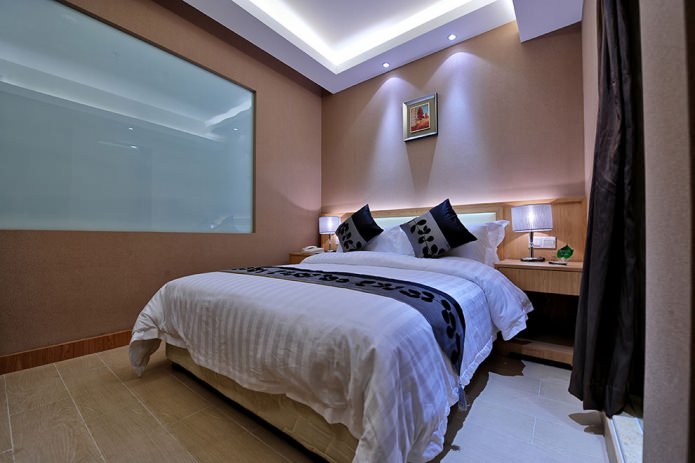
- Mirrors
A false window made of mirrors will help create the impression that there is a window in the room, and the mirror surface visually enlarges a small space.
Tip: To enhance the effect, place mirrors opposite light sources, such as lamps or backlighting. This will create the illusion that light is entering the room, simulating daylight.

Windows
The interior of a room without windows can be easily fixed by cutting a real window in one of the walls. Of course, it will not face the street, but will become an interior window, but this will allow the sun to enter the room, albeit to a small extent. Such windows can be closed with blinds if necessary.
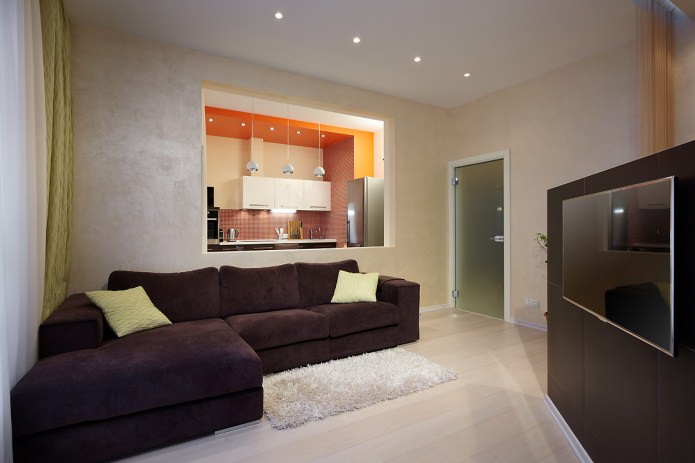
Stained glass
Stained glass can serve not only as decoration, but also as an imitation of a window opening – in this case, a lamp should be placed behind them. Colored highlights will create a festive mood and neutralize the negative feeling of the absence of a window. Stained glass windows can be used to decorate a kitchen, hallway, or bathroom.
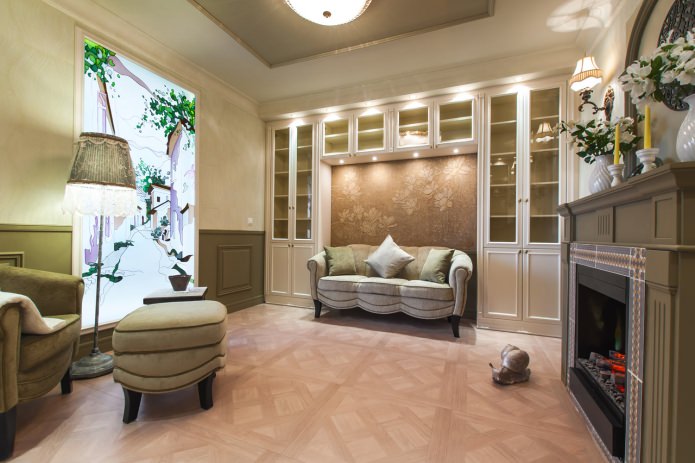
Transom
This is the name of a window that does not open. In the fifties of the last century, transoms were widely used to illuminate bathrooms – they were installed in the walls between the toilet and the kitchen at a distance of five to ten centimeters from the ceiling.
You can also connect a room and a hallway with transoms. The ceiling-mounted transom is not accidental – it allows you to keep the rooms isolated and at the same time provide daylight.
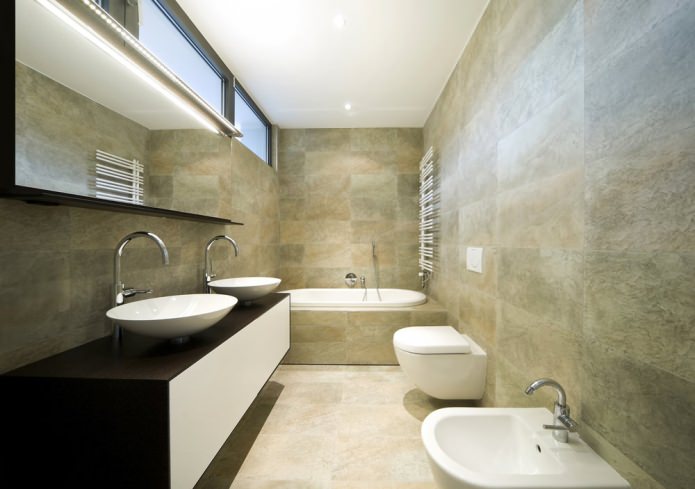
Sliding panels
Other “tricks” are also used in the design of a room without a window – for example, sliding panels instead of walls, allowing you to highlight the bedroom at night, and allow the sun to penetrate into every corner during the day.
Panels can be made of various materials: wood, glass, mirror or fabric.
To improve lighting, choose panels with metal or mirror surfaces that will reflect light and create the illusion of more space. You can also install panels with built-in lighting that will turn on automatically when the panel is closed, adding soft light to a dark room.

Lamps and lighting
The easiest way to create the impression that daylight is entering the room is to install lamps that give diffused light so that they are not visible. For example, this could be a matte translucent panel on the ceiling, under which lamps are placed. You can place lamps in special niches, or even behind cabinets.
If there are many cabinets in the room, for example, a kitchen or a dressing room, then you can place LED strips between them – the light will be noticeably increased, and there will also be an additional decorative effect – the furniture will seem to become lighter and airier.
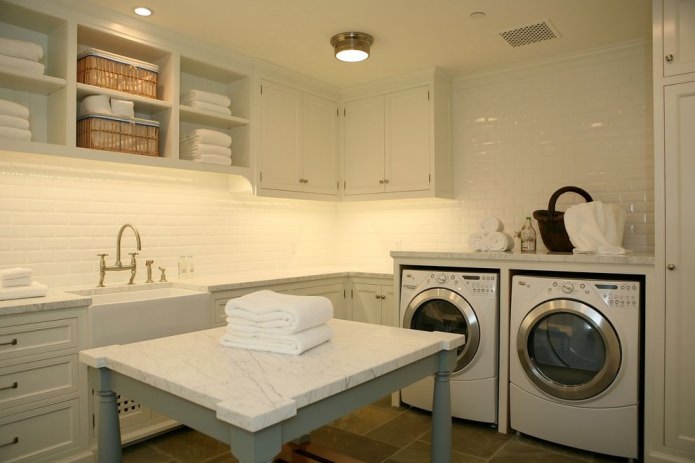
Mirrors
Mirrors – visually expand the room, give it depth, and, reflecting light, increase the illumination. If you place mirror panels ten to fifteen centimeters below the ceiling, the room will become much lighter.
This technique is suitable for decorating any room. By combining mirrors with light sources, you can achieve a significant increase in illumination. For example, you can attach sconces to mirror panels – in this case, the light, reflecting off the mirror, will fill the room with light reminiscent of sunlight.
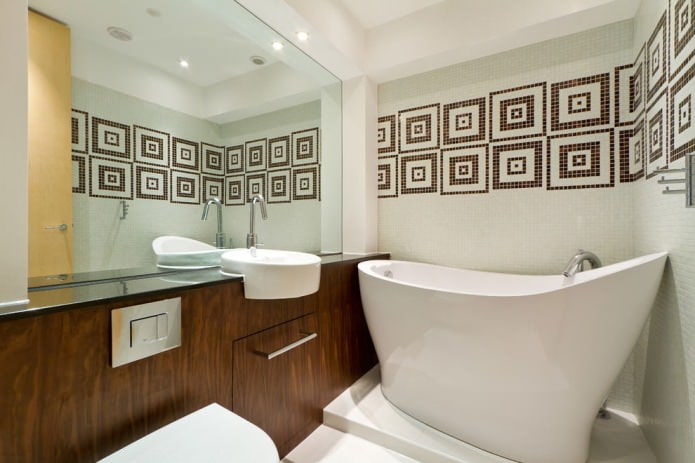
Surfaces
Light can be reflected not only from mirrors, but also from glossy surfaces. In this case, furniture is chosen with glossy facades, and elements of shiny metal are introduced into the decor.
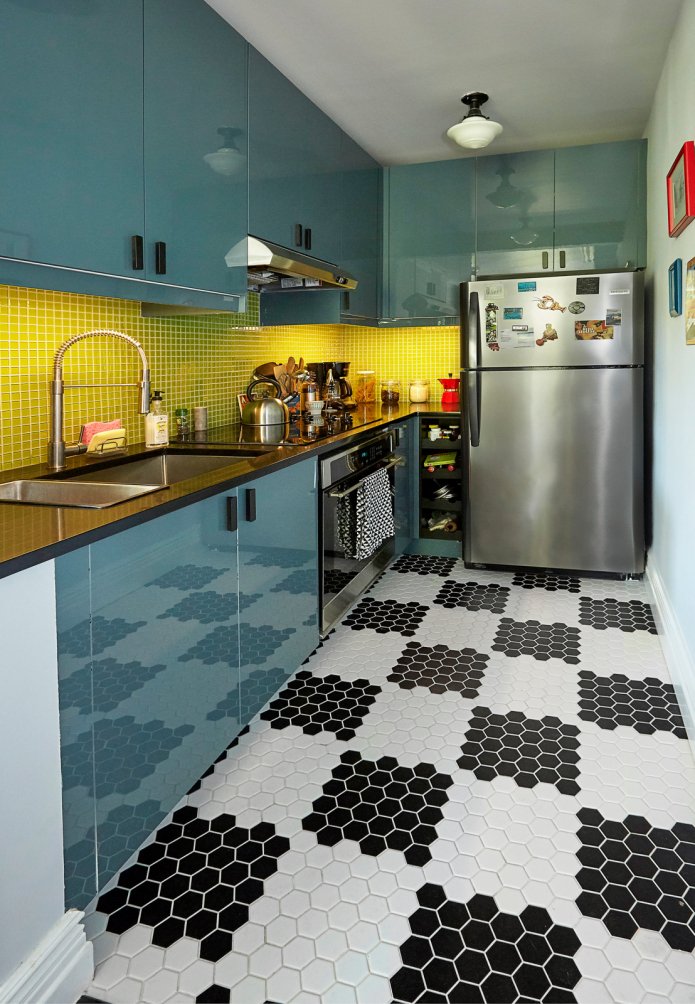
Color
The more white is used in the decoration of the room, the lighter it seems. White reflects rays across the entire spectrum, and due to this, the room is filled with light, even if there is not much of it. The ceiling and walls can be snow-white to increase the illumination, and decorative elements will enliven the interior.
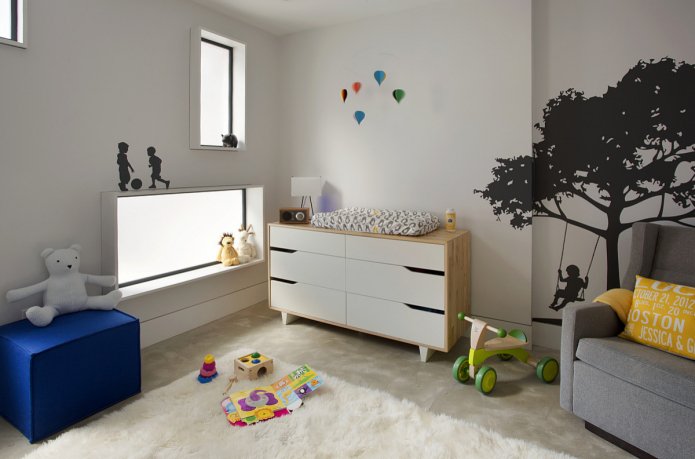
Glass
Using glass objects allows you to simultaneously “dissolve” them in the air and avoid clutter, and increase illumination due to the shine of glass surfaces. In addition, glass tables and chairs do not create obstacles for light rays and do not create shadowed areas in the room.
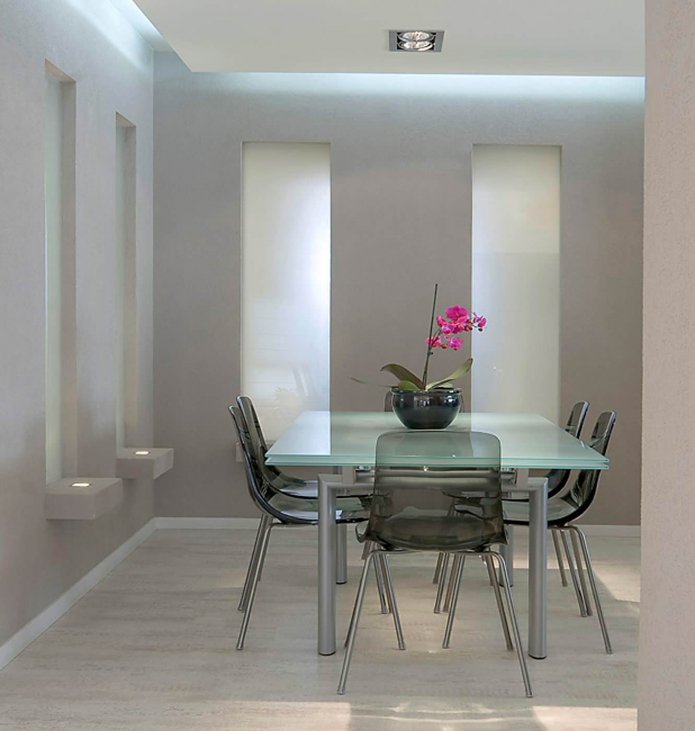
Competently selected design techniques, such as the use of reflective surfaces, properly organized lighting and elements that imitate windows, will help to turn a dark room without a window into a stylish and bright space.
Do not be afraid to experiment with mirrors, stained glass, sliding panels and glossy materials. It is important to remember that the key to success is a combination of functionality and aesthetics. Even the smallest details, such as textures, decorative accents and color palette, can significantly improve the overall perception of space.
Now reading:
- Over 100 images of curtain rods: types, materials, palette and style.
- 15 Easy DIY Room Decor Ideas: DIY Decorations (55 Photos)
- The best ideas for a country house interior: inspiration and photos of solutions
- common mistakes in corner kitchens that create inconveniences and problems.
- Narrow Kitchen Ideas: Over 40 Photos and Design Solutions